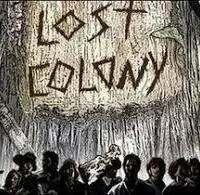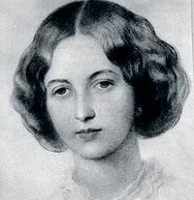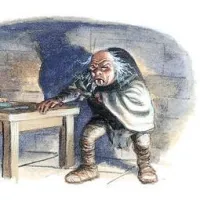Enid Blyton (1897-1968) was an English children’s writer whose books have been among the world’s best-sellers since the 1930s, selling more than 600 million copies. Blyton’s books are still enormously popular, and she is probably best remembered today for her Noddy, Famous Five and Malory Towers series. She is the world’s fourth most-translated author, behind Agatha Christie, Jules Verne and William Shakespeare with her books being translated into 90 languages. Despite this popularity, Blyton’s work became increasingly controversial among literary critics, teachers and parents from the 1950s onwards, because of the alleged unchallenging nature of her writing and the themes of her books, particularly the Noddy series. Some libraries and schools banned her works, which the BBC had refused to broadcast from the 1930s until the 1950s because they were perceived to lack literary merit. Her books have been criticised as being elitist, sexist, racist, xenophobic and at odds with the more progressive environment emerging in post-Second World War Britain, but they have continued to be best-sellers since her death in 1968. After her death and the publication of her daughter Imogen’s 1989 autobiography, A Childhood at Green Hedges, Blyton emerged as an emotionally immature, unstable and often malicious figure. Imogen considered her mother to be “arrogant, insecure, pretentious, very skilled at putting difficult or unpleasant things out of her mind, and without a trace of maternal instinct. As a child, I viewed her as a rather strict authority. As an adult I pitied her.” Blyton’s eldest daughter Gillian remembered her rather differently, however, as “a fair and loving mother, and a fascinating companion”. A H Thompson, who compiled an extensive overview of censorship efforts in the United Kingdom’s public libraries, dedicated an entire chapter to ‘The Enid Blyton Affair,’ and wrote of her in 1975: “No single author has caused more controversy among librarians, literary critics, teachers, and other educationalists and parents during the last thirty years, than Enid Blyton. How is it that the books of this tremendously popular writer for children should have given rise to accusations of censorship against librarians in Australia, New Zealand, and the United Kingdom?” How indeed?
More than half a century has passed since Enid Blyton died on 28 November 1968, fading out of a world that was changing alarmingly from the sunlit simplicity of her stories. She left behind a complicated legacy. For those who point out the sexism, racism, snobbery and xenophobia of her children’s books, a faithful chorus praise her timeless ability to captivate a young audience and instil a love of reading. As recently as 2008, she was voted Britain’s best-loved author. With an astonishing 600 million books sold, it’s true that she was and still is much loved by children, but for many it is this very simplicity that is part of what makes her work so problematic. Blyton’s range of plots and settings has been described as limited, repetitive and continually recycled. Many of her books were critically assessed by teachers and librarians, deemed unfit for children to read, and removed from syllabuses and public libraries. Some librarians felt that Blyton’s restricted use of language, a conscious product of her teaching background, was prejudicial to an appreciation of more literary qualities. In a scathing article published in Encounter in 1958, the journalist Colin Welch remarked that it was “hard to see how a diet of Miss Blyton could help with the 11-plus or even with the Cambridge English Tripos”, but reserved his harshest criticism for Blyton’s Noddy, describing him as an “unnaturally priggish … sanctimonious … witless, spiritless, snivelling, sneaking doll.” While she was alive, Blyton’s response to her critics was that she was uninterested in the views of anyone over the age of 12, claiming that half the attacks on her work were motivated by jealousy and the rest came from “stupid people who don’t know what they’re talking about because they’ve never read any of my books”!
Recently the Royal Mint halted its plans for a 50-pence coin commemorating the 50th anniversary of her death, on the grounds that she “is known to have been a racist, sexist, homophobe and not a very well-regarded writer.” Accusations of racism in Blyton’s books are nothing new – they were first made by a newspaper article in 1966, where Blyton’s The Little Black Doll was highly criticised. Sambo, the black doll, is hated by his owner and the other toys owing to his “ugly black face”, and runs away. A shower of rain washes its face clean, after which it is welcomed back home with its now pink face. In Blyton’s 1944 novel The Island of Adventure, a black servant named Jo-Jo is very intelligent, but is particularly cruel to the children. Accusations of xenophobia were also made against her. As George Greenfield observed, “Enid was very much part of that between-the-wars middle class which believed that foreigners were untrustworthy or funny or sometimes both.” Her villains are often dark-complexioned and/or “foreign”, or poor people. Even at the height of Blyton’s fame, in 1960, the publisher Macmillan rejected the manuscript for the novel The Mystery That Never Was, on the grounds that “there is a faint but unattractive touch of old-fashioned xenophobia in the author’s attitude to the thieves: they are ‘foreign’ … and this seems to be regarded as sufficient to explain their criminality.” In 2017 an article on Blyton pointed out a “checklist” for her villains that included references to dark skin and dark eyes and a “foreign” accent. Despite criticism by contemporaries that her work’s quality began to suffer in the 1950s at the expense of its increasing volume, Blyton nevertheless capitalised on being generally regarded at the time as “a more ‘savoury’, English alternative” to what some considered an “invasion” of Britain by American culture, in the form of “rock music, horror comics, television, teenage culture, delinquency, and Disney”.
Perhaps Blyton’s prolific output was so successful because it perfectly tapped into the paradox of children: they crave freedom and familiarity. Blyton served up both with the abundance of her picnic sandwiches. Her adventures take place in an adult-free world where children have an intoxicating level of autonomy, from the seaside shenanigans of the Famous Five to the dormitory escapades of Malory Towers. This must have been heady stuff even when it was first published in the 1940s; for modern children, who tend to spend less time outdoors than prisoners, it’s a giddy blast of fresh air. The familiarity aspect may be more troubling. Children’s writing is economical by nature, and nothing communicates as concisely as a cliche. At the benign end, this means the comforting figure of the schoolteacher or matron or aunt with firm rules but twinkling eyes (there is so much twinkling in Blyton you could use her as kindling). At the other end, it’s reflexive prejudice. The gender politics – where fathers fulminate in studies, mothers serve up tea, and tomboy George must learn she will never be as good as a real boy – are problematic to say the least. Blyton’s depictions of boys and girls are considered by many critics to be sexist. In a Guardian article published in 2005 Lucy Mangan proposed that the Famous Five series depicts a power struggle between Julian, Dick and George (Georgina), in which the female characters either act like boys or are talked down to, as when Dick lectures George: “it’s really time you gave up thinking you’re as good as a boy.” George has been criticised so much, as this seems to assert Blyton’s understanding that boys were of a far more value to society than girls were. It also seemed to represent the picture of the society in that era — where women were expected to be “homely”. It was very rare that Blyton’s female characters were rough and tough, and lived outside the world of dolls, dresses and frocks.
To address criticisms levelled at Blyton’s work some later editions have been altered to reflect more politically progressive attitudes towards issues such as race, gender, violence between young persons, the treatment of children by adults, and legal changes in Britain as to what is allowable for young children to do in the years since the stories were originally written (e.g. purchasing fireworks); modern reprints of the Noddy series substitute teddy bears or goblins for golliwogs, for instance. The golliwogs who steal Noddy’s car and dump him naked in the Dark Wood in Here Comes Noddy Again are replaced by goblins in the 1986 revision, who strip Noddy only of his shoes and hat and return at the end of the story to apologise. The Faraway Tree‘s Dame Slap, who made regular use of corporal punishment, was changed to Dame Snap who no longer did so, and the names of Dick and Fanny in the same series were changed to Rick and Frannie. Characters in the Malory Towers and St. Clare’s series are no longer spanked or threatened with a spanking, but are instead scolded. References to George’s short hair making her look like a boy were removed in revisions to Five on a Hike Together, reflecting the idea that girls need not have long hair to be considered feminine or normal. Anne of the Famous Five stating that boys cannot wear pretty dresses or like girl’s dolls was removed. In 2010 Hodder, the publisher of the Famous Five series, announced its intention to update the language used in the books, of which it sold more than half a million copies a year. The changes, which Hodder described as “subtle”, mainly affect the dialogue rather than the narrative. For instance, “school tunic” becomes “uniform”, “mother and father”, and “mother and daddy” (this latter one used by young female characters and deemed sexist) becomes “mum and dad”, “bathing” is replaced by “swimming”, “jersey” by “jumper” and “Red Indian” by “Native American”. Some commentators see the changes as necessary to encourage modern readers, whereas others regard them as unnecessary and patronising. In 2016 Hodder’s parent company Hachette announced that they would abandon the revisions as, based on feedback, they had not been a success. Even half a century after her death, the controversy over Enid Blyton and her work shows little sign of ending.















Leave a comment